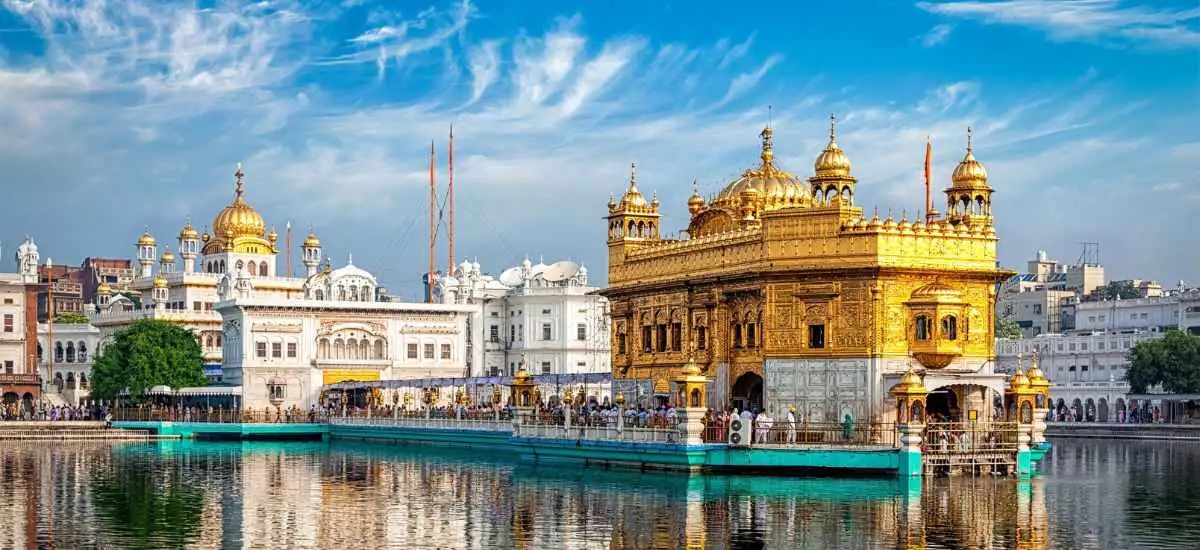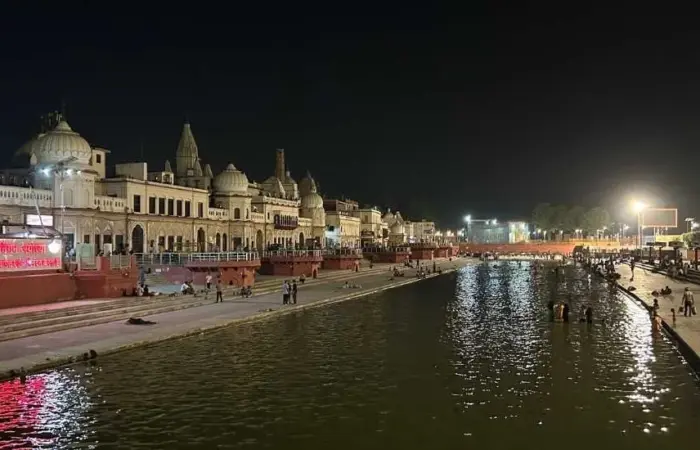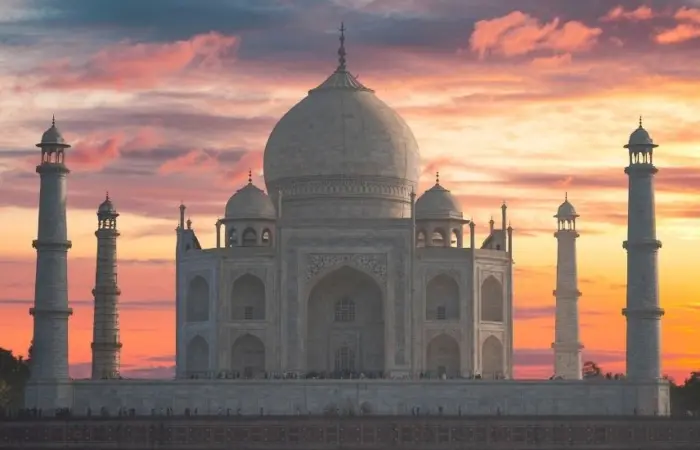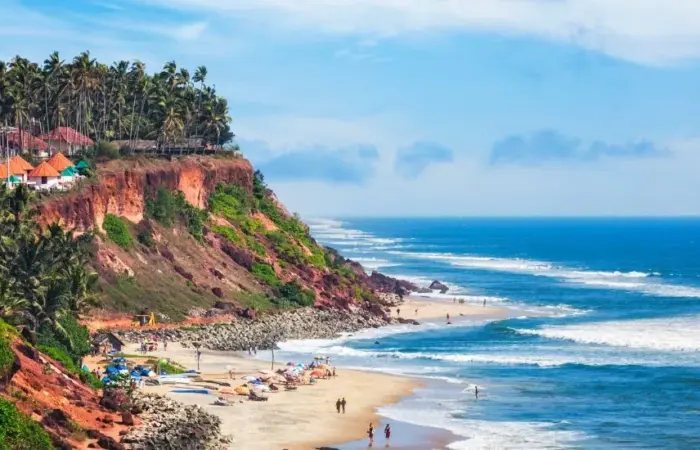
Exploring India is like exploring worlds within worlds. The landscapes, cultures, people, etiquette, languages, dress styles, and food are all different across destinations in this incredible country. In fact, our whole life is not enough to explore the whole of India, because India is as rich and varied, and so are the wonders this amazing land boasts of. So many are the natural and architectural marvels this incredible land is blessed with that make up the wonders of India.
In this blog, we present the 10 architectural wonders of Incredible India. The mesmerising architectural marvels/monuments of India not only reflect its culture and diversity but also act as a time machine, taking you back to the past and telling tales of love or life in ancient times. With each monument exceptionally stunning with its exquisite architecture and vibrant history, we were left with the strenuous task of short-listing the top 10 that you absolutely must visit.
Here is our list of 10 Wonders of Incredible India! Check out:
Taj Mahal
An exceptionally beautiful and amazingly built Indian monument that makes a timeless epitaph of a husband’s eternal love and affection for his wife, the iconic Taj Mahal has huge fans all across the globe.
This magnificent ivory-white marble mausoleum was built by the Mughal Emperor Shahjahan for his beloved wife Mumtaz. Undoubtedly, people who have never heard of the Taj Mahal are quite rare.
An iconic symbol of love and exquisite grandeur, the Taj Mahal is a unique man-made manifestation of the glorious Mughal age and not only a wonder of India but also considered as one of the seven wonders of the world in the modern era. Portraying a unique blend of Hindu and Indo-Islamic architecture, it took around 22 years to complete the Taj Mahal. This mesmerising monument stands along the banks of the Yamuna River in Agra, attracting about 3 million visitors every year from all around the world.
Golden Temple In Amritsar
The beautiful and highly revered Golden Temple or Sri Harmandir Sahib in Amritsar is a fabulous spiritual centre of the Sikh religion in the country.
An embodiment of human brotherhood and equality, the Golden Temple welcomes everyone, regardless of caste, creed, or religion, to seek spiritual solace and religious fulfilment without any hindrance.
Built in white marble and inlaid with precious and semi-precious colourful stones, the spectacular Golden Temple is definitely one of the architectural wonders of India, which displays a unique Sikh architecture whose top half is covered in almost 400 kg of pure gold leaf. The sparkling temple is surrounded by the pool of nectar, Amrit Sarovar, whose waters are said to have healing powers.
Hampi – Group of Monuments
Marked by numerous ruined historical edifices, structures, and temples, history and mythology come to life in Hampi, which was once the capital of the wealthy and prosperous Vijayanagara Empire.
Though in ruins, the magnificent structures in Hampi continue to amaze the world with their grandiose and brilliant artistry of the bygone era. This beautiful and idyllic ancient city stands on the banks of the mighty Tungabhadra River in the state of Karnataka.
A renowned UNESCO World Heritage Site, Hampi is a delight for travellers all over the world. The spellbinding’ Virupaksha Temple’, along with the astounding ‘Vijaya Vittala Temple‘ with its iconic stone chariot shrine and the musical pillars that emit unique musical tones, as well as the amazing ‘Achutaraya Temple‘ with its ornamentally carved pillars, make Hampi a remarkable wonder of incredible India.
Khajuraho Group Of Monuments
Famed for stunning, intricate sculptures depicting different aspects of life —spirituality, love, friendship, royalty, sports, and, most significantly, awe-inspiring art —the Khajuraho Group of Monuments is a UNESCO World Heritage Site that features Hindu and Jain temples.
Khajuraho Temples have won great admiration among both domestic and international tourists for their nagara-style architecture and sensuous stone carvings of human and animal forms in erotic poses.
People from far and near come here to witness the richness, intricate details, symbolism, and expressiveness of ancient Indian art, first-hand. Out of the 85 original temples in Khajuraho, only 22 have survived the weathering of time to constitute one of the world’s great artistic wonders. Cradled by the Vindhya mountain range and snuggled amidst dense forest, this stunning architectural wonder of India is situated in Madhya Pradesh.
Gomateshwara Statue
The gigantic statue of the Bahubali King, Gomateshwara, who renounced his kingdom and became a Jain monk, eventually attaining moksha or liberation, is yet another architectural wonder of India, built out of a single rock monolith.
He is considered the first Tirthankara and the founder of Jainism. Perched at a height of 3350 above sea level, this 57-foot-tall, colossal statue is located at Shravanabelagola, one of the sacred sites for Jains in India.
The majestic statue of Gomateshwara resting high up on the Vindhyagiri Hill catches one’s attention even if you are 30 Km away, and is said to be the world’s tallest monolithic statue. The statue is in Digambara (nude) form, standing straight in the posture of meditation known as Kayotsarga, symbolising one’s victory over earthly attachments and desires that hamper their spiritual ascent towards divinity.
Nalanda
Reckoned as the world’s first completely residential University, Nalanda was one of the most prominent centres of learning in ancient India from the 5th century CE to the 12th century CE. At its height, the University had the capacity to accommodate about 2,000 teachers and 10,000 students.
Nalanda flourished in all its glory till the 12th century and was eminent enough even to attract students and scholars from faraway lands such as China, Korea, Japan, Tibet, Mongolia, Turkey, Sri Lanka, and South East Asia, after which it declined and was ultimately abandoned.
Situated in the historical city of Rajgir in Bihar, Nalanda is greatly valued for its rich collection of scholarly material and manuscripts. The great library of Nalanda University was also very famous. Nalanda was the leading centre of teaching Mahayana Buddhism, but also featured other topics of education. What made Nalanda stand out was the holistic nature of the knowledge sought and imparted at this University, which indicated a seamless coexistence between nature and man, and between living and learning, as is clearly evident in the architectural components of the Nalanda ruins.
Konark Sun Temple
Describing the beauty of Konark Sun Temple, the renowned Bengali poet Rabindranath Tagore said, “Here the language of stone surpasses the language of human”.
One of the outstanding architectural wonders of India, the Konark Sun Temple is built in the shape of a gigantic chariot of the Sun God led by seven horses, evoking its movement across the heavens. The spectacular temple is carved out of sandstone and has 12 wheels on each side to support the colossal structure with a set of spokes and elaborate carvings.
Also known as the Black Pagoda, the Konark Sun Temple is a UNESCO World Heritage Site of India. Dedicated to the Sun God, Surya, this spellbinding temple is situated in the eastern state of Odisha, near the sacred city of Puri. A repository of art forms, the Konark Sun Temple reflects the traditional style of Kalinga architecture. Despite the fact that many of its structures failed to survive the test of time, the Konark Sun Temple still inspires marvel and fascination.
Great Living Chola Temples
The Great Living Chola Temples are true marvels of stupendous architecture that leave everyone spellbound. The three temples built by the Chola dynasty between the 11th and 12th centuries: The Brihadeeswara Temple (Thanjavur), Brihadisvara Temple (Gangaikondacholeeswaram), and Airavatesvara Temple (Darasuram) together form the “Great Living Chola Temples”.
They are a part of the UNESCO World Heritage Site that proudly stands as a testimony to the architectural splendour and beauty of Chola art, architecture, and sculpture. The wall of these spellbinding temples is covered in exquisite carving, inscriptions, and paintings, which speak volumes about the skilled artisans at that time. These ancient temples of the Chola empire still stick to the age-old rituals and festivities, and hence the name “Great Living Chola Temples”. They form an intrinsic part of the Tamilian heritage, reflecting their culture and ethnicity.
Ajanta And Ellora Caves
One of the most exotic caves of India, the Ajanta and Ellora Caves, which depict India’s architectural brilliance in the past, are declared a World Heritage Site by UNESCO. The Ajanta Caves are a series of 30 rock-cut cave monuments which display Viharas and Buddhist monasteries, while the Ellora Caves constitute a set of 34 rock-cut religious centres for Hindu, Buddhist, and Jain.
Located in the Aurangabad district, the Ajanta and Ellora Caves are the star attractions of Maharashtra. This ancient Heritage site houses some of the finest Indian murals and stone sculptures carved with hammer and chisel. The awe-inspiring paintings depicting the life of Gautam Buddha and stories from the Jataka Tales are the main attractions of the Ajanta Caves. The Kailasa Temple inside the Ellora Caves, dedicated to Lord Shiva, is the largest monolithic rock-cut temple in the world and fascinates tourists visiting here. The Kailash Temple at the Ellora Caves is such an outstanding engineering marvel that it is really hard to believe the rock was scooped out top to bottom to create a chariot-shaped temple.
Statue Of Unity
The Statue of Unity, built as an ode to the Iron Man of India, Sardar Vallabhbhai Patel, is the latest engineering marvel of India. This colossal statue, having a height of about 182 meters, is the world’s tallest free-standing statue. Towering over the River Narmada and overlooking the sprawling Sardar Sarovar Dam, the Statue of Unity is just another jewel in the crown of Gujarat.
It is one of the projects that have been commissioned and completed in record time, in just 46 months. Construction of the statue began in October 2013 and was inaugurated by Indian Prime Minister Narendra Modi on 31 October 2018, the 143rd birth anniversary of Sardar Vallabhbhai Patel. The Statue of Unity was designed by Indian sculptor Ram V. Sutar. It has now emerged as one of India’s most favourite tourist spots, featuring an in-house museum, a laser light and sound show, a children’s nutrition park, a dinosaur trail, and much more to fascinate visitors.










